Java web与Java中的Servlet
一。前言
Java语言大多用于开发web系统的后端,也就是我们是的B/S架构。通过浏览器一个URL去访问系统的后端资源和逻辑。 当我在代码里看到这个类HttpServletRequest 时 让我想到了Servlet,Servlet看上去多么像是Java的一个普通类,但是它确实不是一个类,它是通过Java实现的一项功能,就是用来连接URL和服务端程序的中间件。除了HttpServletRequest 对应的还有HttpServletResponse
二。介绍Servlet
什么事Servlet
Servlet(Server Applet)是JavaServlet的简称,称为小服务程序或服务连接器,用Java编写的服务器端程序,具有独立于平台和协议的特性,主要功能在于交互式地浏览和生成数据,生成动态Web内容是
JavaWeb中,我们将会接触到三大组件(Servlet、Filter、Listener),Servlet由服务器调用,处理服务器接收到的请求,即完成,接受请求数据 --> 处理请求 --> 完成响应,其本质就是一个实现了Servlet接口的java类
实现Servlet的方式
实现Servlet有三种方式:
- 实现 javax.servlet.Servlet 接口;
- 继承 javax.servlet.GenericServlet类;
- 继承 javax.servlet.http.HttpServlet类;
实际开发中,我们通常会选择继承HttpServlet类来完成我们的Servlet,但认识Servlet接口这种方式也是很重要的,是我们入门知识中不可或缺的部分
使用Servlet
/** Licensed to the Apache Software Foundation (ASF) under one or more* contributor license agreements. See the NOTICE file distributed with* this work for additional information regarding copyright ownership.* The ASF licenses this file to You under the Apache License, Version 2.0* (the "License"); you may not use this file except in compliance with* the License. You may obtain a copy of the License at** http://www.apache.org/licenses/LICENSE-2.0** Unless required by applicable law or agreed to in writing, software* distributed under the License is distributed on an "AS IS" BASIS,* WITHOUT WARRANTIES OR CONDITIONS OF ANY KIND, either express or implied.* See the License for the specific language governing permissions and* limitations under the License.*/package javax.servlet.http;import java.io.IOException;
import java.util.Collection;
import java.util.Enumeration;import javax.servlet.ServletException;
import javax.servlet.ServletRequest;/*** Extends the {@link javax.servlet.ServletRequest} interface to provide request* information for HTTP servlets.* <p>* The servlet container creates an <code>HttpServletRequest</code> object and* passes it as an argument to the servlet's service methods* (<code>doGet</code>, <code>doPost</code>, etc).*/
public interface HttpServletRequest extends ServletRequest {/*** String identifier for Basic authentication. Value "BASIC"*/public static final String BASIC_AUTH = "BASIC";/*** String identifier for Form authentication. Value "FORM"*/public static final String FORM_AUTH = "FORM";/*** String identifier for Client Certificate authentication. Value* "CLIENT_CERT"*/public static final String CLIENT_CERT_AUTH = "CLIENT_CERT";/*** String identifier for Digest authentication. Value "DIGEST"*/public static final String DIGEST_AUTH = "DIGEST";/*** Returns the name of the authentication scheme used to protect the* servlet. All servlet containers support basic, form and client* certificate authentication, and may additionally support digest* authentication. If the servlet is not authenticated <code>null</code> is* returned.* <p>* Same as the value of the CGI variable AUTH_TYPE.** @return one of the static members BASIC_AUTH, FORM_AUTH, CLIENT_CERT_AUTH,* DIGEST_AUTH (suitable for == comparison) or the* container-specific string indicating the authentication scheme,* or <code>null</code> if the request was not authenticated.*/public String getAuthType();/*** Returns an array containing all of the <code>Cookie</code> objects the* client sent with this request. This method returns <code>null</code> if* no cookies were sent.** @return an array of all the <code>Cookies</code> included with this* request, or <code>null</code> if the request has no cookies*/public Cookie[] getCookies();/*** Returns the value of the specified request header as a <code>long</code>* value that represents a <code>Date</code> object. Use this method with* headers that contain dates, such as <code>If-Modified-Since</code>.* <p>* The date is returned as the number of milliseconds since January 1, 1970* GMT. The header name is case insensitive.* <p>* If the request did not have a header of the specified name, this method* returns -1. If the header can't be converted to a date, the method throws* an <code>IllegalArgumentException</code>.** @param name* a <code>String</code> specifying the name of the header* @return a <code>long</code> value representing the date specified in the* header expressed as the number of milliseconds since January 1,* 1970 GMT, or -1 if the named header was not included with the* request* @exception IllegalArgumentException* If the header value can't be converted to a date*/public long getDateHeader(String name);/*** Returns the value of the specified request header as a* <code>String</code>. If the request did not include a header of the* specified name, this method returns <code>null</code>. If there are* multiple headers with the same name, this method returns the first head* in the request. The header name is case insensitive. You can use this* method with any request header.** @param name* a <code>String</code> specifying the header name* @return a <code>String</code> containing the value of the requested* header, or <code>null</code> if the request does not have a* header of that name*/public String getHeader(String name);/*** Returns all the values of the specified request header as an* <code>Enumeration</code> of <code>String</code> objects.* <p>* Some headers, such as <code>Accept-Language</code> can be sent by clients* as several headers each with a different value rather than sending the* header as a comma separated list.* <p>* If the request did not include any headers of the specified name, this* method returns an empty <code>Enumeration</code>. The header name is case* insensitive. You can use this method with any request header.** @param name* a <code>String</code> specifying the header name* @return an <code>Enumeration</code> containing the values of the requested* header. If the request does not have any headers of that name* return an empty enumeration. If the container does not allow* access to header information, return null*/public Enumeration<String> getHeaders(String name);/*** Returns an enumeration of all the header names this request contains. If* the request has no headers, this method returns an empty enumeration.* <p>* Some servlet containers do not allow servlets to access headers using* this method, in which case this method returns <code>null</code>** @return an enumeration of all the header names sent with this request; if* the request has no headers, an empty enumeration; if the servlet* container does not allow servlets to use this method,* <code>null</code>*/public Enumeration<String> getHeaderNames();/*** Returns the value of the specified request header as an <code>int</code>.* If the request does not have a header of the specified name, this method* returns -1. If the header cannot be converted to an integer, this method* throws a <code>NumberFormatException</code>.* <p>* The header name is case insensitive.** @param name* a <code>String</code> specifying the name of a request header* @return an integer expressing the value of the request header or -1 if the* request doesn't have a header of this name* @exception NumberFormatException* If the header value can't be converted to an* <code>int</code>*/public int getIntHeader(String name);/*** Returns the name of the HTTP method with which this request was made, for* example, GET, POST, or PUT. Same as the value of the CGI variable* REQUEST_METHOD.** @return a <code>String</code> specifying the name of the method with* which this request was made*/public String getMethod();/*** Returns any extra path information associated with the URL the client* sent when it made this request. The extra path information follows the* servlet path but precedes the query string and will start with a "/"* character.* <p>* This method returns <code>null</code> if there was no extra path* information.* <p>* Same as the value of the CGI variable PATH_INFO.** @return a <code>String</code>, decoded by the web container, specifying* extra path information that comes after the servlet path but* before the query string in the request URL; or <code>null</code>* if the URL does not have any extra path information*/public String getPathInfo();/*** Returns any extra path information after the servlet name but before the* query string, and translates it to a real path. Same as the value of the* CGI variable PATH_TRANSLATED.* <p>* If the URL does not have any extra path information, this method returns* <code>null</code> or the servlet container cannot translate the virtual* path to a real path for any reason (such as when the web application is* executed from an archive). The web container does not decode this string.** @return a <code>String</code> specifying the real path, or* <code>null</code> if the URL does not have any extra path* information*/public String getPathTranslated();/*** Returns the portion of the request URI that indicates the context of the* request. The context path always comes first in a request URI. The path* starts with a "/" character but does not end with a "/" character. For* servlets in the default (root) context, this method returns "". The* container does not decode this string.** @return a <code>String</code> specifying the portion of the request URI* that indicates the context of the request*/public String getContextPath();/*** Returns the query string that is contained in the request URL after the* path. This method returns <code>null</code> if the URL does not have a* query string. Same as the value of the CGI variable QUERY_STRING.** @return a <code>String</code> containing the query string or* <code>null</code> if the URL contains no query string. The value* is not decoded by the container.*/public String getQueryString();/*** Returns the login of the user making this request, if the user has been* authenticated, or <code>null</code> if the user has not been* authenticated. Whether the user name is sent with each subsequent request* depends on the browser and type of authentication. Same as the value of* the CGI variable REMOTE_USER.** @return a <code>String</code> specifying the login of the user making* this request, or <code>null</code> if the user login is not known*/public String getRemoteUser();/*** Returns a boolean indicating whether the authenticated user is included* in the specified logical "role". Roles and role membership can be defined* using deployment descriptors. If the user has not been authenticated, the* method returns <code>false</code>.** @param role* a <code>String</code> specifying the name of the role* @return a <code>boolean</code> indicating whether the user making this* request belongs to a given role; <code>false</code> if the user* has not been authenticated*/public boolean isUserInRole(String role);/*** Returns a <code>java.security.Principal</code> object containing the name* of the current authenticated user. If the user has not been* authenticated, the method returns <code>null</code>.** @return a <code>java.security.Principal</code> containing the name of the* user making this request; <code>null</code> if the user has not* been authenticated*/public java.security.Principal getUserPrincipal();/*** Returns the session ID specified by the client. This may not be the same* as the ID of the current valid session for this request. If the client* did not specify a session ID, this method returns <code>null</code>.** @return a <code>String</code> specifying the session ID, or* <code>null</code> if the request did not specify a session ID* @see #isRequestedSessionIdValid*/public String getRequestedSessionId();/*** Returns the part of this request's URL from the protocol name up to the* query string in the first line of the HTTP request. The web container* does not decode this String. For example:* <table summary="Examples of Returned Values">* <tr align=left>* <th>First line of HTTP request</th>* <th>Returned Value</th>* <tr>* <td>POST /some/path.html HTTP/1.1* <td>* <td>/some/path.html* <tr>* <td>GET http://foo.bar/a.html HTTP/1.0* <td>* <td>/a.html* <tr>* <td>HEAD /xyz?a=b HTTP/1.1* <td>* <td>/xyz* </table>* <p>* To reconstruct an URL with a scheme and host, use* {@link #getRequestURL}.** @return a <code>String</code> containing the part of the URL from the* protocol name up to the query string* @see #getRequestURL*/public String getRequestURI();/*** Reconstructs the URL the client used to make the request. The returned* URL contains a protocol, server name, port number, and server path, but* it does not include query string parameters.* <p>* Because this method returns a <code>StringBuffer</code>, not a string,* you can modify the URL easily, for example, to append query parameters.* <p>* This method is useful for creating redirect messages and for reporting* errors.** @return a <code>StringBuffer</code> object containing the reconstructed* URL*/public StringBuffer getRequestURL();/*** Returns the part of this request's URL that calls the servlet. This path* starts with a "/" character and includes either the servlet name or a* path to the servlet, but does not include any extra path information or a* query string. Same as the value of the CGI variable SCRIPT_NAME.* <p>* This method will return an empty string ("") if the servlet used to* process this request was matched using the "/*" pattern.** @return a <code>String</code> containing the name or path of the servlet* being called, as specified in the request URL, decoded, or an* empty string if the servlet used to process the request is* matched using the "/*" pattern.*/public String getServletPath();/*** Returns the current <code>HttpSession</code> associated with this request* or, if there is no current session and <code>create</code> is true,* returns a new session.* <p>* If <code>create</code> is <code>false</code> and the request has no valid* <code>HttpSession</code>, this method returns <code>null</code>.* <p>* To make sure the session is properly maintained, you must call this* method before the response is committed. If the container is using* cookies to maintain session integrity and is asked to create a new* session when the response is committed, an IllegalStateException is* thrown.** @param create* <code>true</code> to create a new session for this request if* necessary; <code>false</code> to return <code>null</code> if* there's no current session* @return the <code>HttpSession</code> associated with this request or* <code>null</code> if <code>create</code> is <code>false</code>* and the request has no valid session* @see #getSession()*/public HttpSession getSession(boolean create);/*** Returns the current session associated with this request, or if the* request does not have a session, creates one.** @return the <code>HttpSession</code> associated with this request* @see #getSession(boolean)*/public HttpSession getSession();/*** Changes the session ID of the session associated with this request. This* method does not create a new session object it only changes the ID of the* current session.** @return the new session ID allocated to the session* @see HttpSessionIdListener* @since Servlet 3.1*/public String changeSessionId();/*** Checks whether the requested session ID is still valid.** @return <code>true</code> if this request has an id for a valid session* in the current session context; <code>false</code> otherwise* @see #getRequestedSessionId* @see #getSession*/public boolean isRequestedSessionIdValid();/*** Checks whether the requested session ID came in as a cookie.** @return <code>true</code> if the session ID came in as a cookie;* otherwise, <code>false</code>* @see #getSession*/public boolean isRequestedSessionIdFromCookie();/*** Checks whether the requested session ID came in as part of the request* URL.** @return <code>true</code> if the session ID came in as part of a URL;* otherwise, <code>false</code>* @see #getSession*/public boolean isRequestedSessionIdFromURL();/*** @return {@link #isRequestedSessionIdFromURL()}* @deprecated As of Version 2.1 of the Java Servlet API, use* {@link #isRequestedSessionIdFromURL} instead.*/@SuppressWarnings("dep-ann")// Spec API does not use @Deprecatedpublic boolean isRequestedSessionIdFromUrl();/*** Triggers the same authentication process as would be triggered if the* request is for a resource that is protected by a security constraint.** @param response The response to use to return any authentication* challenge* @return <code>true</code> if the user is successfully authenticated and* <code>false</code> if not** @throws IOException if the authentication process attempted to read from* the request or write to the response and an I/O error occurred* @throws IllegalStateException if the authentication process attempted to* write to the response after it had been committed* @throws ServletException if the authentication failed and the caller is* expected to handle the failure* @since Servlet 3.0*/public boolean authenticate(HttpServletResponse response)throws IOException, ServletException;/*** Authenticate the provided user name and password and then associated the* authenticated user with the request.** @param username The user name to authenticate* @param password The password to use to authenticate the user** @throws ServletException* If any of {@link #getRemoteUser()},* {@link #getUserPrincipal()} or {@link #getAuthType()} are* non-null, if the configured authenticator does not support* user name and password authentication or if the* authentication fails* @since Servlet 3.0*/public void login(String username, String password) throws ServletException;/*** Removes any authenticated user from the request.** @throws ServletException* If the logout fails* @since Servlet 3.0*/public void logout() throws ServletException;/*** Return a collection of all uploaded Parts.** @return A collection of all uploaded Parts.* @throws IOException* if an I/O error occurs* @throws IllegalStateException* if size limits are exceeded or no multipart configuration is* provided* @throws ServletException* if the request is not multipart/form-data* @since Servlet 3.0*/public Collection<Part> getParts() throws IOException,ServletException;/*** Gets the named Part or null if the Part does not exist. Triggers upload* of all Parts.** @param name The name of the Part to obtain** @return The named Part or null if the Part does not exist* @throws IOException* if an I/O error occurs* @throws IllegalStateException* if size limits are exceeded* @throws ServletException* if the request is not multipart/form-data* @since Servlet 3.0*/public Part getPart(String name) throws IOException,ServletException;/*** Start the HTTP upgrade process and pass the connection to the provided* protocol handler once the current request/response pair has completed* processing. Calling this method sets the response status to {@link* HttpServletResponse#SC_SWITCHING_PROTOCOLS} and flushes the response.* Protocol specific headers must have already been set before this method* is called.** @param <T> The type of the upgrade handler* @param httpUpgradeHandlerClass The class that implements the upgrade* handler** @return A newly created instance of the specified upgrade handler type** @throws IOException* if an I/O error occurred during the upgrade* @throws ServletException* if the given httpUpgradeHandlerClass fails to be instantiated* @since Servlet 3.1*/public <T extends HttpUpgradeHandler> T upgrade(Class<T> httpUpgradeHandlerClass) throws java.io.IOException, ServletException;
}
/** Licensed to the Apache Software Foundation (ASF) under one or more* contributor license agreements. See the NOTICE file distributed with* this work for additional information regarding copyright ownership.* The ASF licenses this file to You under the Apache License, Version 2.0* (the "License"); you may not use this file except in compliance with* the License. You may obtain a copy of the License at** http://www.apache.org/licenses/LICENSE-2.0** Unless required by applicable law or agreed to in writing, software* distributed under the License is distributed on an "AS IS" BASIS,* WITHOUT WARRANTIES OR CONDITIONS OF ANY KIND, either express or implied.* See the License for the specific language governing permissions and* limitations under the License.*/
package javax.servlet.http;import java.io.IOException;
import java.util.Collection;import javax.servlet.ServletResponse;/*** Extends the {@link ServletResponse} interface to provide HTTP-specific* functionality in sending a response. For example, it has methods to access* HTTP headers and cookies.* <p>* The servlet container creates an <code>HttpServletResponse</code> object and* passes it as an argument to the servlet's service methods (<code>doGet</code>, <code>doPost</code>, etc).** @see javax.servlet.ServletResponse*/
public interface HttpServletResponse extends ServletResponse {/*** Adds the specified cookie to the response. This method can be called* multiple times to set more than one cookie.** @param cookie* the Cookie to return to the client*/public void addCookie(Cookie cookie);/*** Returns a boolean indicating whether the named response header has* already been set.** @param name* the header name* @return <code>true</code> if the named response header has already been* set; <code>false</code> otherwise*/public boolean containsHeader(String name);/*** Encodes the specified URL by including the session ID in it, or, if* encoding is not needed, returns the URL unchanged. The implementation of* this method includes the logic to determine whether the session ID needs* to be encoded in the URL. For example, if the browser supports cookies,* or session tracking is turned off, URL encoding is unnecessary.* <p>* For robust session tracking, all URLs emitted by a servlet should be run* through this method. Otherwise, URL rewriting cannot be used with* browsers which do not support cookies.** @param url* the url to be encoded.* @return the encoded URL if encoding is needed; the unchanged URL* otherwise.*/public String encodeURL(String url);/*** Encodes the specified URL for use in the <code>sendRedirect</code> method* or, if encoding is not needed, returns the URL unchanged. The* implementation of this method includes the logic to determine whether the* session ID needs to be encoded in the URL. Because the rules for making* this determination can differ from those used to decide whether to encode* a normal link, this method is separated from the <code>encodeURL</code>* method.* <p>* All URLs sent to the <code>HttpServletResponse.sendRedirect</code> method* should be run through this method. Otherwise, URL rewriting cannot be* used with browsers which do not support cookies.** @param url* the url to be encoded.* @return the encoded URL if encoding is needed; the unchanged URL* otherwise.* @see #sendRedirect* @see #encodeUrl*/public String encodeRedirectURL(String url);/*** @param url* the url to be encoded.* @return the encoded URL if encoding is needed; the unchanged URL* otherwise.* @deprecated As of version 2.1, use encodeURL(String url) instead*/@SuppressWarnings("dep-ann")// Spec API does not use @Deprecatedpublic String encodeUrl(String url);/*** @param url* the url to be encoded.* @return the encoded URL if encoding is needed; the unchanged URL* otherwise.* @deprecated As of version 2.1, use encodeRedirectURL(String url) instead*/@SuppressWarnings("dep-ann")// Spec API does not use @Deprecatedpublic String encodeRedirectUrl(String url);/*** Sends an error response to the client using the specified status code and* clears the output buffer. The server defaults to creating the response to* look like an HTML-formatted server error page containing the specified* message, setting the content type to "text/html", leaving cookies and* other headers unmodified. If an error-page declaration has been made for* the web application corresponding to the status code passed in, it will* be served back in preference to the suggested msg parameter.* <p>* If the response has already been committed, this method throws an* IllegalStateException. After using this method, the response should be* considered to be committed and should not be written to.** @param sc* the error status code* @param msg* the descriptive message* @exception IOException* If an input or output exception occurs* @exception IllegalStateException* If the response was committed*/public void sendError(int sc, String msg) throws IOException;/*** Sends an error response to the client using the specified status code and* clears the buffer. This is equivalent to calling {@link #sendError(int,* String)} with the same status code and <code>null</code> for the message.** @param sc* the error status code* @exception IOException* If an input or output exception occurs* @exception IllegalStateException* If the response was committed before this method call*/public void sendError(int sc) throws IOException;/*** Sends a temporary redirect response to the client using the specified* redirect location URL. This method can accept relative URLs; the servlet* container must convert the relative URL to an absolute URL before sending* the response to the client. If the location is relative without a leading* '/' the container interprets it as relative to the current request URI.* If the location is relative with a leading '/' the container interprets* it as relative to the servlet container root.* <p>* If the response has already been committed, this method throws an* IllegalStateException. After using this method, the response should be* considered to be committed and should not be written to.** @param location* the redirect location URL* @exception IOException* If an input or output exception occurs* @exception IllegalStateException* If the response was committed or if a partial URL is given* and cannot be converted into a valid URL*/public void sendRedirect(String location) throws IOException;/*** Sets a response header with the given name and date-value. The date is* specified in terms of milliseconds since the epoch. If the header had* already been set, the new value overwrites the previous one. The* <code>containsHeader</code> method can be used to test for the presence* of a header before setting its value.** @param name* the name of the header to set* @param date* the assigned date value* @see #containsHeader* @see #addDateHeader*/public void setDateHeader(String name, long date);/*** Adds a response header with the given name and date-value. The date is* specified in terms of milliseconds since the epoch. This method allows* response headers to have multiple values.** @param name* the name of the header to set* @param date* the additional date value* @see #setDateHeader*/public void addDateHeader(String name, long date);/*** Sets a response header with the given name and value. If the header had* already been set, the new value overwrites the previous one. The* <code>containsHeader</code> method can be used to test for the presence* of a header before setting its value.** @param name* the name of the header* @param value* the header value If it contains octet string, it should be* encoded according to RFC 2047* (http://www.ietf.org/rfc/rfc2047.txt)* @see #containsHeader* @see #addHeader*/public void setHeader(String name, String value);/*** Adds a response header with the given name and value. This method allows* response headers to have multiple values.** @param name* the name of the header* @param value* the additional header value If it contains octet string, it* should be encoded according to RFC 2047* (http://www.ietf.org/rfc/rfc2047.txt)* @see #setHeader*/public void addHeader(String name, String value);/*** Sets a response header with the given name and integer value. If the* header had already been set, the new value overwrites the previous one.* The <code>containsHeader</code> method can be used to test for the* presence of a header before setting its value.** @param name* the name of the header* @param value* the assigned integer value* @see #containsHeader* @see #addIntHeader*/public void setIntHeader(String name, int value);/*** Adds a response header with the given name and integer value. This method* allows response headers to have multiple values.** @param name* the name of the header* @param value* the assigned integer value* @see #setIntHeader*/public void addIntHeader(String name, int value);/*** Sets the status code for this response. This method is used to set the* return status code when there is no error (for example, for the status* codes SC_OK or SC_MOVED_TEMPORARILY). If there is an error, and the* caller wishes to invoke an error-page defined in the web application, the* <code>sendError</code> method should be used instead.* <p>* The container clears the buffer and sets the Location header, preserving* cookies and other headers.** @param sc* the status code* @see #sendError*/public void setStatus(int sc);/*** Sets the status code and message for this response.** @param sc* the status code* @param sm* the status message* @deprecated As of version 2.1, due to ambiguous meaning of the message* parameter. To set a status code use* <code>setStatus(int)</code>, to send an error with a* description use <code>sendError(int, String)</code>.*/@SuppressWarnings("dep-ann")// Spec API does not use @Deprecatedpublic void setStatus(int sc, String sm);/*** Get the HTTP status code for this Response.** @return The HTTP status code for this Response** @since Servlet 3.0*/public int getStatus();/*** Return the value for the specified header, or <code>null</code> if this* header has not been set. If more than one value was added for this* name, only the first is returned; use {@link #getHeaders(String)} to* retrieve all of them.** @param name Header name to look up** @return The first value for the specified header. This is the raw value* so if multiple values are specified in the first header then they* will be returned as a single header value .** @since Servlet 3.0*/public String getHeader(String name);/*** Return a Collection of all the header values associated with the* specified header name.** @param name Header name to look up** @return The values for the specified header. These are the raw values so* if multiple values are specified in a single header that will be* returned as a single header value.** @since Servlet 3.0*/public Collection<String> getHeaders(String name);/*** Get the header names set for this HTTP response.** @return The header names set for this HTTP response.** @since Servlet 3.0*/public Collection<String> getHeaderNames();/** Server status codes; see RFC 2068.*//*** Status code (100) indicating the client can continue.*/public static final int SC_CONTINUE = 100;/*** Status code (101) indicating the server is switching protocols according* to Upgrade header.*/public static final int SC_SWITCHING_PROTOCOLS = 101;/*** Status code (200) indicating the request succeeded normally.*/public static final int SC_OK = 200;/*** Status code (201) indicating the request succeeded and created a new* resource on the server.*/public static final int SC_CREATED = 201;/*** Status code (202) indicating that a request was accepted for processing,* but was not completed.*/public static final int SC_ACCEPTED = 202;/*** Status code (203) indicating that the meta information presented by the* client did not originate from the server.*/public static final int SC_NON_AUTHORITATIVE_INFORMATION = 203;/*** Status code (204) indicating that the request succeeded but that there* was no new information to return.*/public static final int SC_NO_CONTENT = 204;/*** Status code (205) indicating that the agent <em>SHOULD</em> reset the* document view which caused the request to be sent.*/public static final int SC_RESET_CONTENT = 205;/*** Status code (206) indicating that the server has fulfilled the partial* GET request for the resource.*/public static final int SC_PARTIAL_CONTENT = 206;/*** Status code (300) indicating that the requested resource corresponds to* any one of a set of representations, each with its own specific location.*/public static final int SC_MULTIPLE_CHOICES = 300;/*** Status code (301) indicating that the resource has permanently moved to a* new location, and that future references should use a new URI with their* requests.*/public static final int SC_MOVED_PERMANENTLY = 301;/*** Status code (302) indicating that the resource has temporarily moved to* another location, but that future references should still use the* original URI to access the resource. This definition is being retained* for backwards compatibility. SC_FOUND is now the preferred definition.*/public static final int SC_MOVED_TEMPORARILY = 302;/*** Status code (302) indicating that the resource reside temporarily under a* different URI. Since the redirection might be altered on occasion, the* client should continue to use the Request-URI for future* requests.(HTTP/1.1) To represent the status code (302), it is recommended* to use this variable.*/public static final int SC_FOUND = 302;/*** Status code (303) indicating that the response to the request can be* found under a different URI.*/public static final int SC_SEE_OTHER = 303;/*** Status code (304) indicating that a conditional GET operation found that* the resource was available and not modified.*/public static final int SC_NOT_MODIFIED = 304;/*** Status code (305) indicating that the requested resource <em>MUST</em> be* accessed through the proxy given by the <code><em>Location</em></code>* field.*/public static final int SC_USE_PROXY = 305;/*** Status code (307) indicating that the requested resource resides* temporarily under a different URI. The temporary URI <em>SHOULD</em> be* given by the <code><em>Location</em></code> field in the response.*/public static final int SC_TEMPORARY_REDIRECT = 307;/*** Status code (400) indicating the request sent by the client was* syntactically incorrect.*/public static final int SC_BAD_REQUEST = 400;/*** Status code (401) indicating that the request requires HTTP* authentication.*/public static final int SC_UNAUTHORIZED = 401;/*** Status code (402) reserved for future use.*/public static final int SC_PAYMENT_REQUIRED = 402;/*** Status code (403) indicating the server understood the request but* refused to fulfill it.*/public static final int SC_FORBIDDEN = 403;/*** Status code (404) indicating that the requested resource is not* available.*/public static final int SC_NOT_FOUND = 404;/*** Status code (405) indicating that the method specified in the* <code><em>Request-Line</em></code> is not allowed for the resource* identified by the <code><em>Request-URI</em></code>.*/public static final int SC_METHOD_NOT_ALLOWED = 405;/*** Status code (406) indicating that the resource identified by the request* is only capable of generating response entities which have content* characteristics not acceptable according to the accept headers sent in* the request.*/public static final int SC_NOT_ACCEPTABLE = 406;/*** Status code (407) indicating that the client <em>MUST</em> first* authenticate itself with the proxy.*/public static final int SC_PROXY_AUTHENTICATION_REQUIRED = 407;/*** Status code (408) indicating that the client did not produce a request* within the time that the server was prepared to wait.*/public static final int SC_REQUEST_TIMEOUT = 408;/*** Status code (409) indicating that the request could not be completed due* to a conflict with the current state of the resource.*/public static final int SC_CONFLICT = 409;/*** Status code (410) indicating that the resource is no longer available at* the server and no forwarding address is known. This condition* <em>SHOULD</em> be considered permanent.*/public static final int SC_GONE = 410;/*** Status code (411) indicating that the request cannot be handled without a* defined <code><em>Content-Length</em></code>.*/public static final int SC_LENGTH_REQUIRED = 411;/*** Status code (412) indicating that the precondition given in one or more* of the request-header fields evaluated to false when it was tested on the* server.*/public static final int SC_PRECONDITION_FAILED = 412;/*** Status code (413) indicating that the server is refusing to process the* request because the request entity is larger than the server is willing* or able to process.*/public static final int SC_REQUEST_ENTITY_TOO_LARGE = 413;/*** Status code (414) indicating that the server is refusing to service the* request because the <code><em>Request-URI</em></code> is longer than the* server is willing to interpret.*/public static final int SC_REQUEST_URI_TOO_LONG = 414;/*** Status code (415) indicating that the server is refusing to service the* request because the entity of the request is in a format not supported by* the requested resource for the requested method.*/public static final int SC_UNSUPPORTED_MEDIA_TYPE = 415;/*** Status code (416) indicating that the server cannot serve the requested* byte range.*/public static final int SC_REQUESTED_RANGE_NOT_SATISFIABLE = 416;/*** Status code (417) indicating that the server could not meet the* expectation given in the Expect request header.*/public static final int SC_EXPECTATION_FAILED = 417;/*** Status code (500) indicating an error inside the HTTP server which* prevented it from fulfilling the request.*/public static final int SC_INTERNAL_SERVER_ERROR = 500;/*** Status code (501) indicating the HTTP server does not support the* functionality needed to fulfill the request.*/public static final int SC_NOT_IMPLEMENTED = 501;/*** Status code (502) indicating that the HTTP server received an invalid* response from a server it consulted when acting as a proxy or gateway.*/public static final int SC_BAD_GATEWAY = 502;/*** Status code (503) indicating that the HTTP server is temporarily* overloaded, and unable to handle the request.*/public static final int SC_SERVICE_UNAVAILABLE = 503;/*** Status code (504) indicating that the server did not receive a timely* response from the upstream server while acting as a gateway or proxy.*/public static final int SC_GATEWAY_TIMEOUT = 504;/*** Status code (505) indicating that the server does not support or refuses* to support the HTTP protocol version that was used in the request* message.*/public static final int SC_HTTP_VERSION_NOT_SUPPORTED = 505;
}
Servlet生命周期
-
客户端请求该 Servlet;
- 2.
加载 Servlet 类到内存;
- 3.
实例化并调用init()方法初始化该 Servlet;
- 4.
service()(根据请求方法不同调用doGet() 或者 doPost(),此外还有doHead()、doPut()、doTrace()、doDelete()、doOptions()、destroy())。
- 5.
加载和实例化 Servlet。这项操作一般是动态执行的。然而,Server 通常会提供一个管理的选项,用于在 Server 启动时强制装载和初始化特定的 Servlet。
Server 创建一个 Servlet的实例
第一个客户端的请求到达 Server
Server 调用 Servlet 的 init() 方法(可配置为 Server 创建 Servlet 实例时调用,在 web.xml 中 标签下配置 标签,配置的值为整型,值越小 Servlet 的启动优先级越高)
一个客户端的请求到达 Server
Server 创建一个请求对象,处理客户端请求
Server 创建一个响应对象,响应客户端请求
Server 激活 Servlet 的 service() 方法,传递请求和响应对象作为参数
service() 方法获得关于请求对象的信息,处理请求,访问其他资源,获得需要的信息
service() 方法使用响应对象的方法,将响应传回Server,最终到达客户端。service()方法可能激活其它方法以处理请求,如 doGet() 或 doPost() 或程序员自己开发的新的方法。
对于更多的客户端请求,Server 创建新的请求和响应对象,仍然激活此 Servlet 的 service() 方法,将这两个对象作为参数传递给它。如此重复以上的循环,但无需再次调用 init() 方法。一般 Servlet 只初始化一次(只有一个对象),当 Server 不再需要 Servlet 时(一般当 Server 关闭时),Server 调用 Servlet 的 destroy() 方法。
相关文章:

Java web与Java中的Servlet
一。前言 Java语言大多用于开发web系统的后端,也就是我们是的B/S架构。通过浏览器一个URL去访问系统的后端资源和逻辑。 当我在代码里看到这个类HttpServletRequest 时 让我想到了Servlet,Servlet看上去多么像是Java的一个普通类,但是它确实…...

kafka常用目录文件解析
文章目录 1、消息日志文件(.log)2、消费者偏移量文件(__consumer_offsets)3、偏移量索引文件(.index)4、时间索引文件( .timeindex)5、检查点引文件( .checkpoint&#x…...
RV1126+FFMPEG推流项目源码
源码在我的gitee上面,感兴趣的可以自行了解 nullhttps://gitee.com/x-lan/rv126-ffmpeg-streaming-projecthttps://gitee.com/x-lan/rv126-ffmpeg-streaming-project...

ANSYS SimAI
ANSYS SimAI 是 ANSYS 公司推出的一款基于人工智能(AI)的仿真解决方案,旨在通过机器学习技术加速仿真流程,降低计算资源需求,并为用户提供更高效的工程决策支持。其核心目标是简化复杂仿真过程,帮助工程师快…...

hedfs和hive数据迁移后校验脚本
先谈论校验方法,本人腾讯云大数据工程师。 1、hdfs的校验 这个通常就是distcp校验,hdfs通过distcp迁移到另一个集群,怎么校验你的对不对。 有人会说,默认会有校验CRC校验。我们关闭了,为什么关闭?全量迁…...
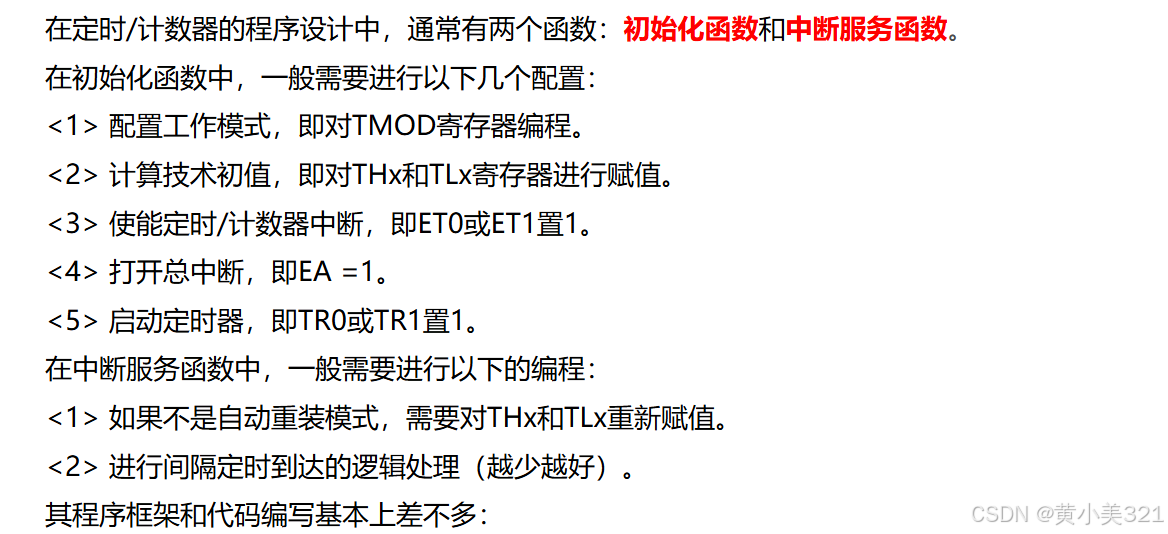
蓝桥杯单片机(八)定时器的基本原理与应用
模块训练: 当有长定时情况时,也就是定时长度超过65.5ms时,采用多次定时累加 一、定时器介绍 1.单片机的定时/计数器 2.定时器工作原理 3.定时器相关寄存器 二、定时器使用程序设计 1.程序设计思路 与写中断函数一样,先写一个初…...
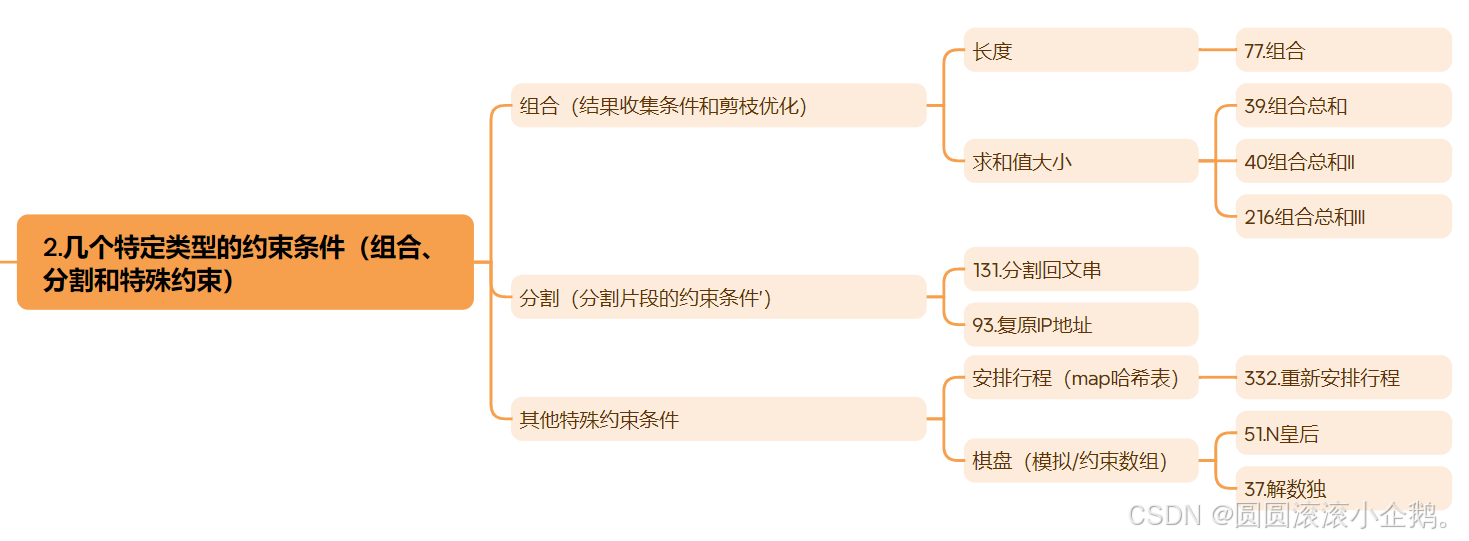
刷题总结 回溯算法
为了方便复习并且在把算法忘掉的时候能尽量快速的捡起来 刷完回溯算法这里需要做个总结 回溯算法的适用范围 回溯算法是深度优先搜索(DFS)的一种特定应用,在DFS的基础上引入了约束检查和回退机制。 相比于普通的DFS,回溯法的优…...

C++ 静态变量static的使用方法
static概述: static关键字有三种使用方式,其中前两种只指在C语言中使用,第三种在C中使用。 静态局部变量(C) 静态全局变量/函数(C) 静态数据成员/成员函数(C) 静态局部变量 静态局部变量&…...
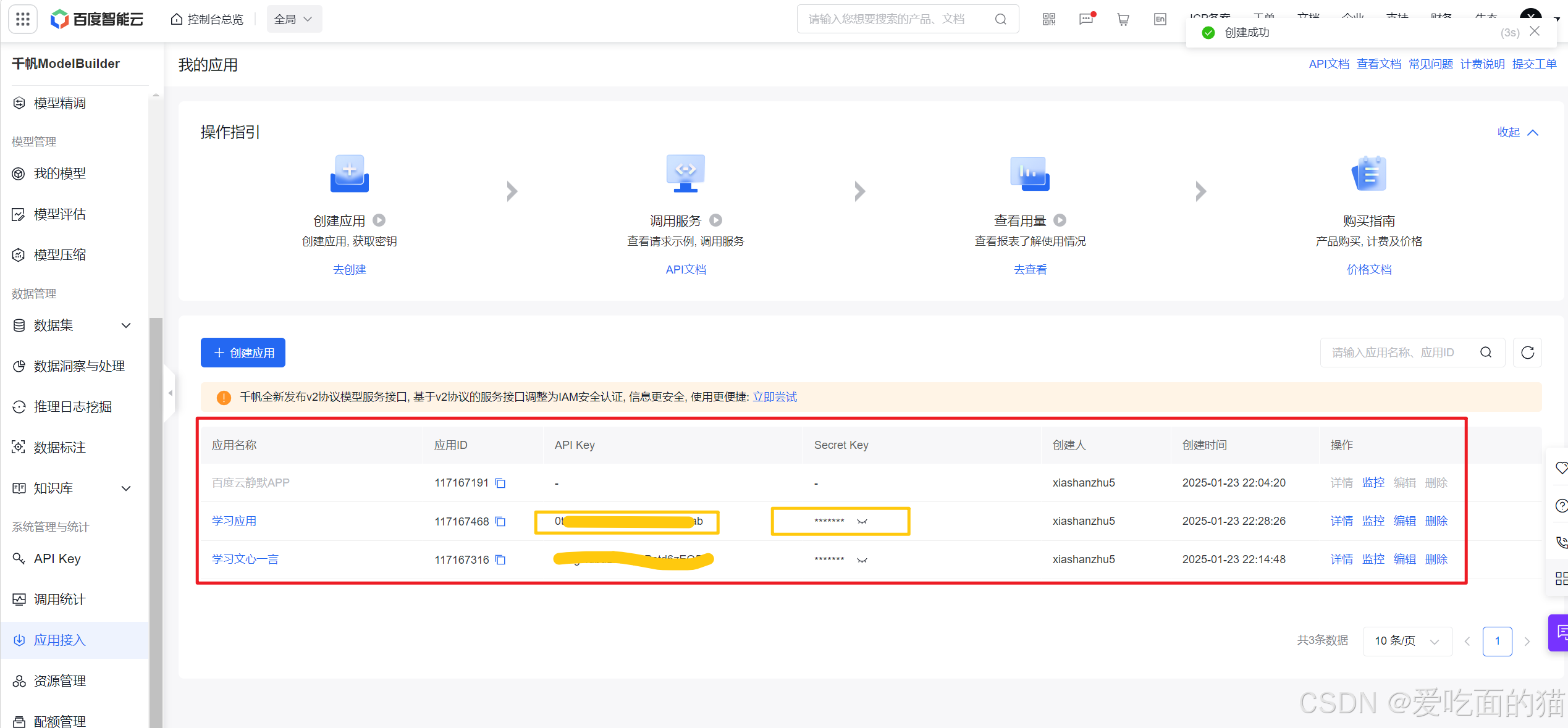
Langchain+文心一言调用
import osfrom langchain_community.llms import QianfanLLMEndpointos.environ["QIANFAN_AK"] "" os.environ["QIANFAN_SK"] ""llm_wenxin QianfanLLMEndpoint()res llm_wenxin.invoke("中国国庆日是哪一天?") print(…...

20250124 Flink中 窗口开始时间和結束時間
增量聚合的 ProcessWindowFunction # ProcessWindowFunction 可以与 ReduceFunction 或 AggregateFunction 搭配使用, 使其能够在数据到达窗口的时候进行增量聚合。当窗口关闭时,ProcessWindowFunction 将会得到聚合的结果。 这样它就可以增量聚合窗口的…...
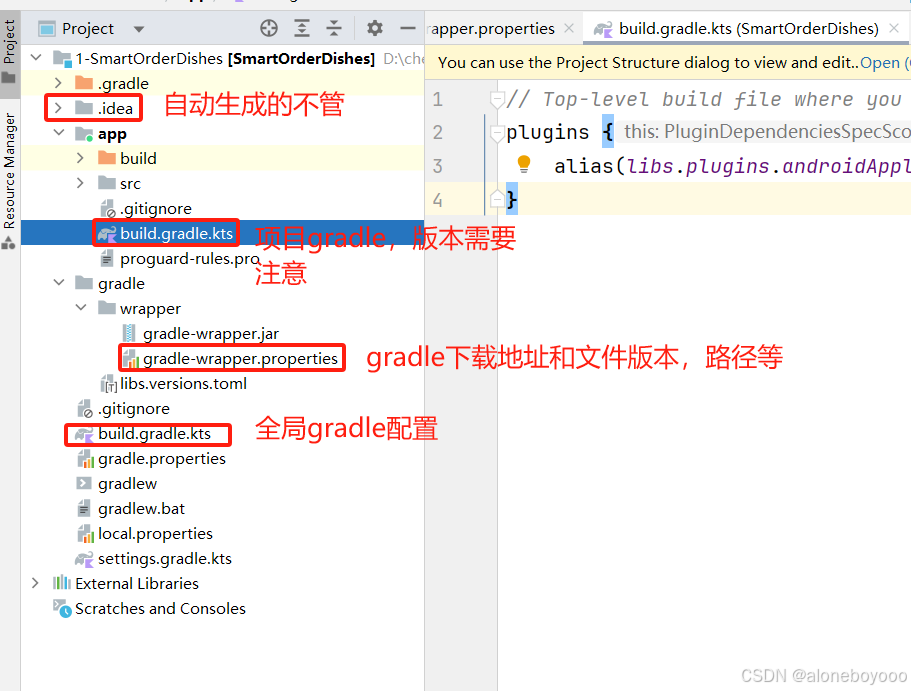
Android Studio安装配置
一、注意事项 想做安卓app和开发板通信,踩了大坑,Android 开发不是下载了就能直接开发的,对于新手需要注意的如下: 1、Android Studio版本,根据自己的Android Studio版本对应决定了你所兼容的AGP(Android…...
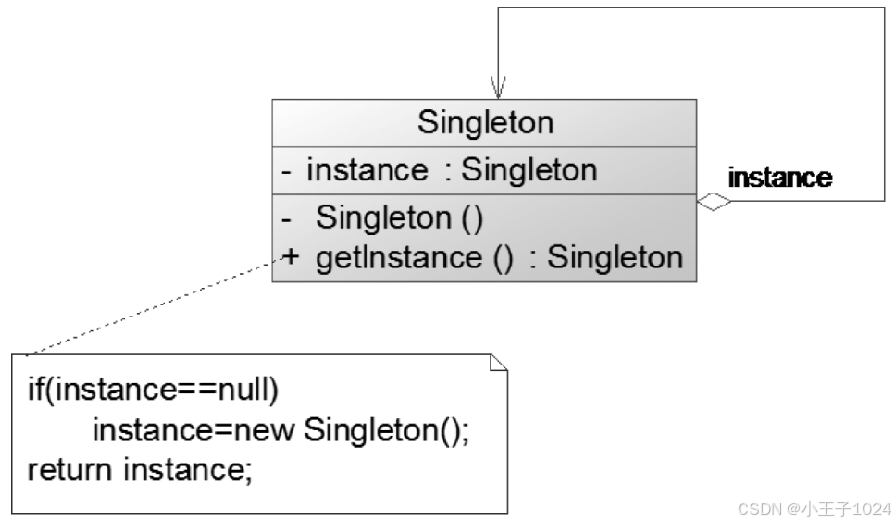
设计模式Python版 单例模式
文章目录 前言一、单例模式二、单例模式实现方式三、单例模式示例四、单例模式在Django框架的应用 前言 GOF设计模式分三大类: 创建型模式:关注对象的创建过程,包括单例模式、简单工厂模式、工厂方法模式、抽象工厂模式、原型模式和建造者模…...
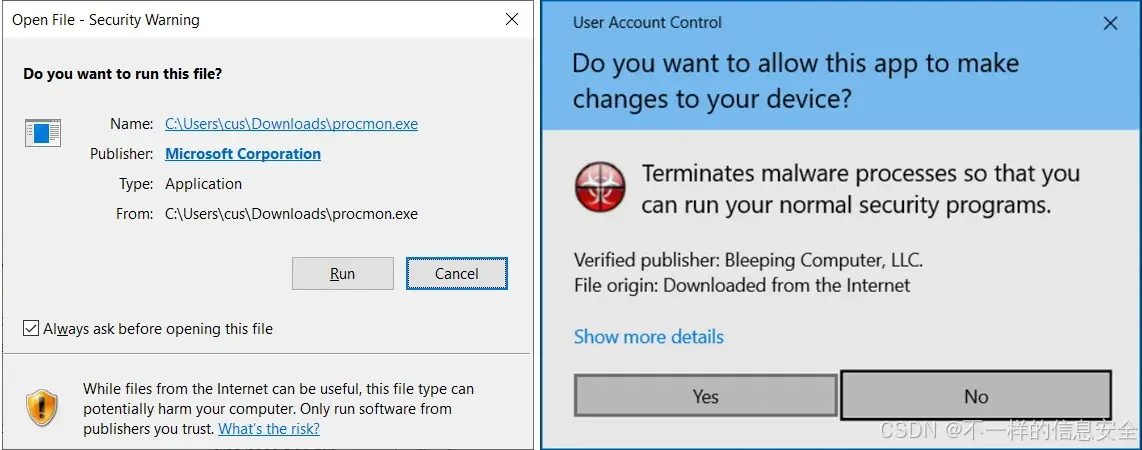
7-Zip高危漏洞CVE-2025-0411:解析与修复
7-Zip高危漏洞CVE-2025-0411:解析与修复 免责声明 本系列工具仅供安全专业人员进行已授权环境使用,此工具所提供的功能只为网络安全人员对自己所负责的网站、服务器等(包括但不限于)进行检测或维护参考,未经授权请勿利…...
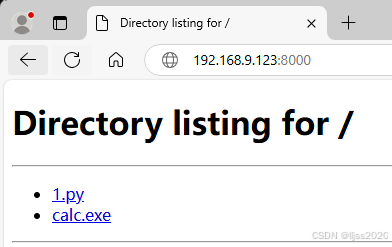
python实现http文件服务器访问下载
//1.py import http.server import socketserver import os import threading import sys# 获取当前脚本所在的目录 DIRECTORY os.path.dirname(os.path.abspath(__file__))# 设置服务器的端口 PORT 8000# 自定义Handler,将根目录设置为脚本所在目录 class MyHTT…...
—— 容灾与备份)
《一文讲透》第4期:KWDB 数据库运维(6)—— 容灾与备份
一、KWDB 容灾 WAL 概述 KWDB 采用预写式日志(Write-Ahead Logging,WAL),记录每个时序表的模式变更和数据变更,以实现时序数据库的数据灾难恢复、时序数据的一致性和原子性。 KWDB 默认会将保存在 WAL 日志缓存中的…...

ArcGIS10.2 许可License点击始终启动无响应的解决办法及正常启动的前提
1、问题描述 在ArcGIS License Administrator中,手动点击“启动”无响应;且在计算机管理-服务中,无ArcGIS License 或者License的启动、停止、禁止等均为灰色,无法操作。 2、解决方法 ①通过cmd对service.txt进行手动服务的启动…...

Level2逐笔成交逐笔委托毫秒记录:今日分享优质股票数据20250124
逐笔成交逐笔委托下载 链接: https://pan.baidu.com/s/1UWVY11Q1IOfME9itDN5aZA?pwdhgeg 提取码: hgeg Level2逐笔成交逐笔委托数据分享下载 通过Level2逐笔成交与逐笔委托的详细数据,这种以毫秒为单位的信息能揭示许多关键点,如庄家意图、误导性行为…...
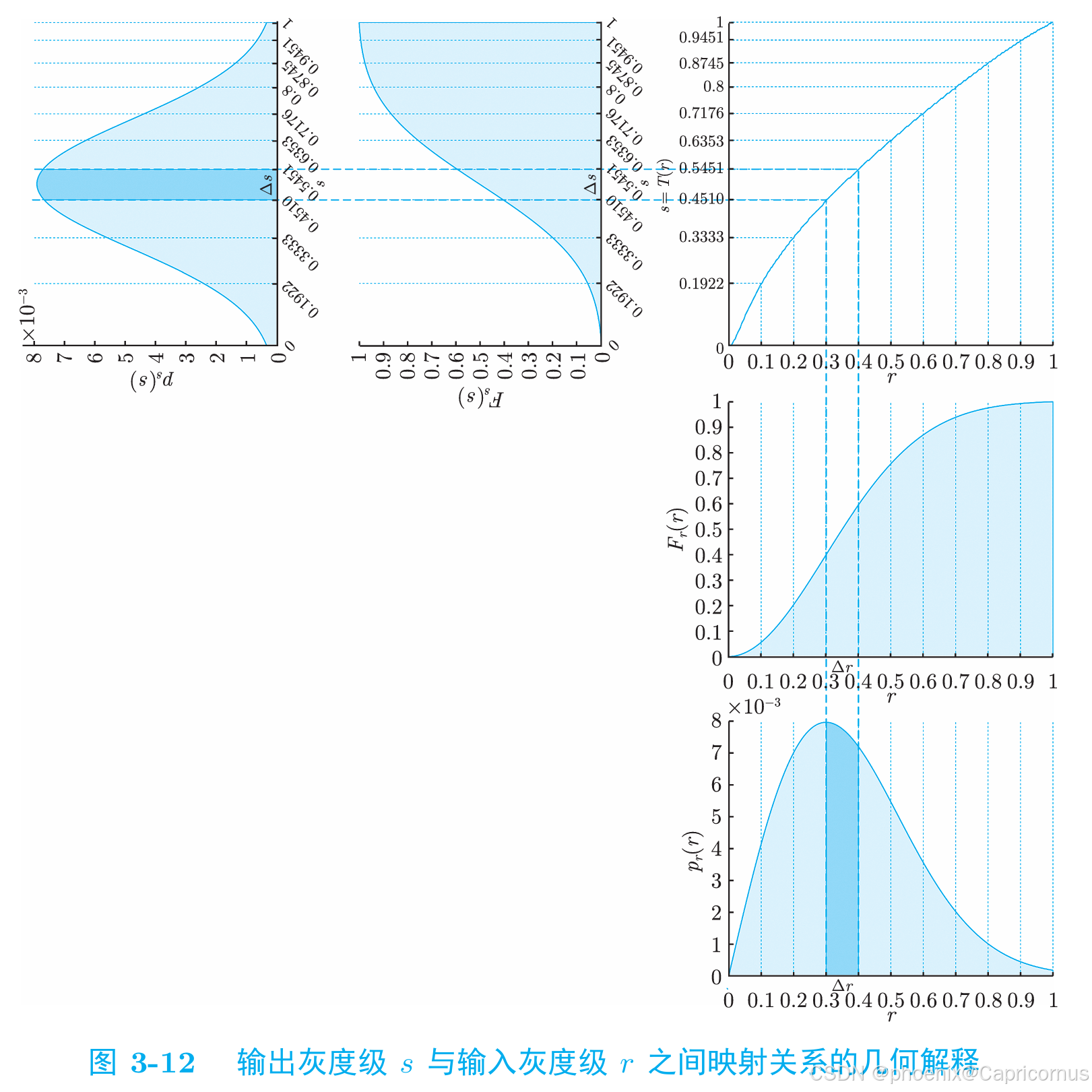
概率密度函数(PDF)分布函数(CDF)——直方图累积直方图——直方图规定化的数学基础
对于连续型随机变量,分布函数(Cumulative Distribution Function, CDF)是概率密度函数(Probability Density Function, PDF)的变上限积分,概率密度函数是分布函数的导函数。 如果我们有一个连续型随机变量…...
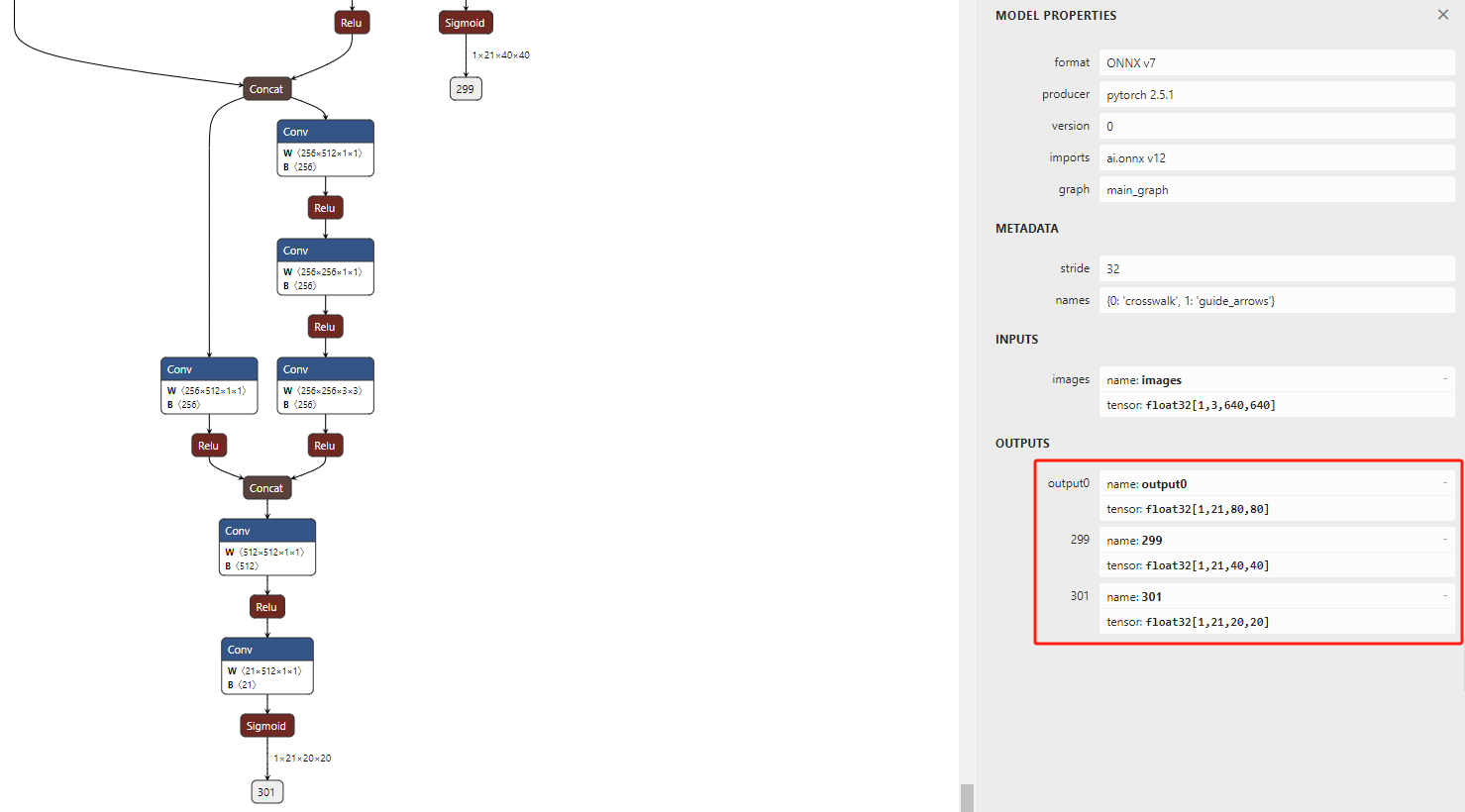
YOLOv5训练自己的数据及rknn部署
YOLOv5训练自己的数据及rknn部署 一、下载源码二、准备自己的数据集2.1 标注图像2.2 数据集结构 三、配置YOLOv5训练3.1 修改配置文件3.2 模型选择 四、训练五、测试六、部署6.1 pt转onnx6.2 onnx转rknn 七、常见错误7.1 训练过程中的错误7.1.1 cuda: out of memory7.1.2 train…...

计算机图形学:实验四 带纹理的OBJ文件读取和显示
一、程序功能设计 在程序中读取带纹理的obj文件,载入相应的纹理图片文件,将带纹理的模型显示在程序窗口中。实现带纹理的OBJ文件读取与显示功能,具体设计如下: OBJ文件解析与数据存储 通过实现TriMesh类中的readObj函数&#x…...

Java如何权衡是使用无序的数组还是有序的数组
在 Java 中,选择有序数组还是无序数组取决于具体场景的性能需求与操作特点。以下是关键权衡因素及决策指南: ⚖️ 核心权衡维度 维度有序数组无序数组查询性能二分查找 O(log n) ✅线性扫描 O(n) ❌插入/删除需移位维护顺序 O(n) ❌直接操作尾部 O(1) ✅内存开销与无序数组相…...
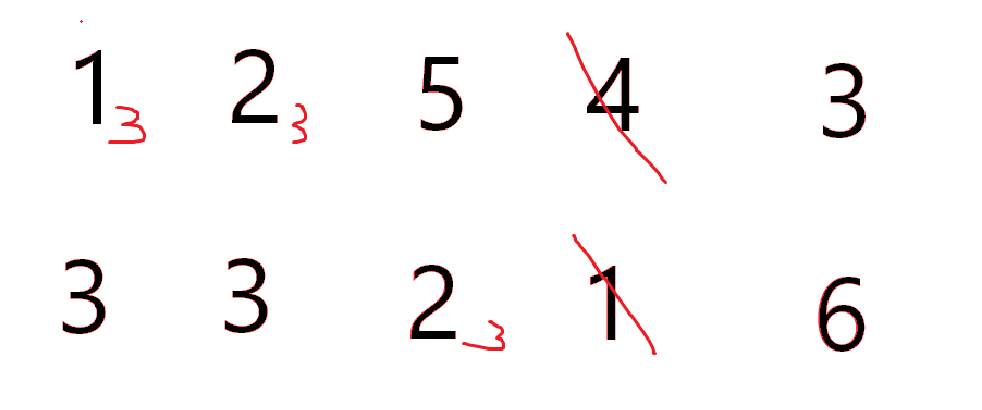
cf2117E
原题链接:https://codeforces.com/contest/2117/problem/E 题目背景: 给定两个数组a,b,可以执行多次以下操作:选择 i (1 < i < n - 1),并设置 或,也可以在执行上述操作前执行一次删除任意 和 。求…...
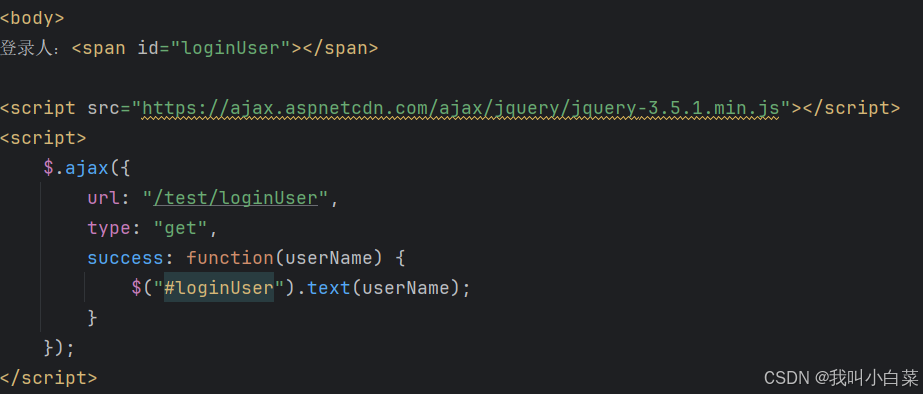
【Java_EE】Spring MVC
目录 Spring Web MVC 编辑注解 RestController RequestMapping RequestParam RequestParam RequestBody PathVariable RequestPart 参数传递 注意事项 编辑参数重命名 RequestParam 编辑编辑传递集合 RequestParam 传递JSON数据 编辑RequestBody …...

HTML前端开发:JavaScript 常用事件详解
作为前端开发的核心,JavaScript 事件是用户与网页交互的基础。以下是常见事件的详细说明和用法示例: 1. onclick - 点击事件 当元素被单击时触发(左键点击) button.onclick function() {alert("按钮被点击了!&…...

IoT/HCIP实验-3/LiteOS操作系统内核实验(任务、内存、信号量、CMSIS..)
文章目录 概述HelloWorld 工程C/C配置编译器主配置Makefile脚本烧录器主配置运行结果程序调用栈 任务管理实验实验结果osal 系统适配层osal_task_create 其他实验实验源码内存管理实验互斥锁实验信号量实验 CMISIS接口实验还是得JlINKCMSIS 简介LiteOS->CMSIS任务间消息交互…...

【碎碎念】宝可梦 Mesh GO : 基于MESH网络的口袋妖怪 宝可梦GO游戏自组网系统
目录 游戏说明《宝可梦 Mesh GO》 —— 局域宝可梦探索Pokmon GO 类游戏核心理念应用场景Mesh 特性 宝可梦玩法融合设计游戏构想要素1. 地图探索(基于物理空间 广播范围)2. 野生宝可梦生成与广播3. 对战系统4. 道具与通信5. 延伸玩法 安全性设计 技术选…...

SiFli 52把Imagie图片,Font字体资源放在指定位置,编译成指定img.bin和font.bin的问题
分区配置 (ptab.json) img 属性介绍: img 属性指定分区存放的 image 名称,指定的 image 名称必须是当前工程生成的 binary 。 如果 binary 有多个文件,则以 proj_name:binary_name 格式指定文件名, proj_name 为工程 名&…...
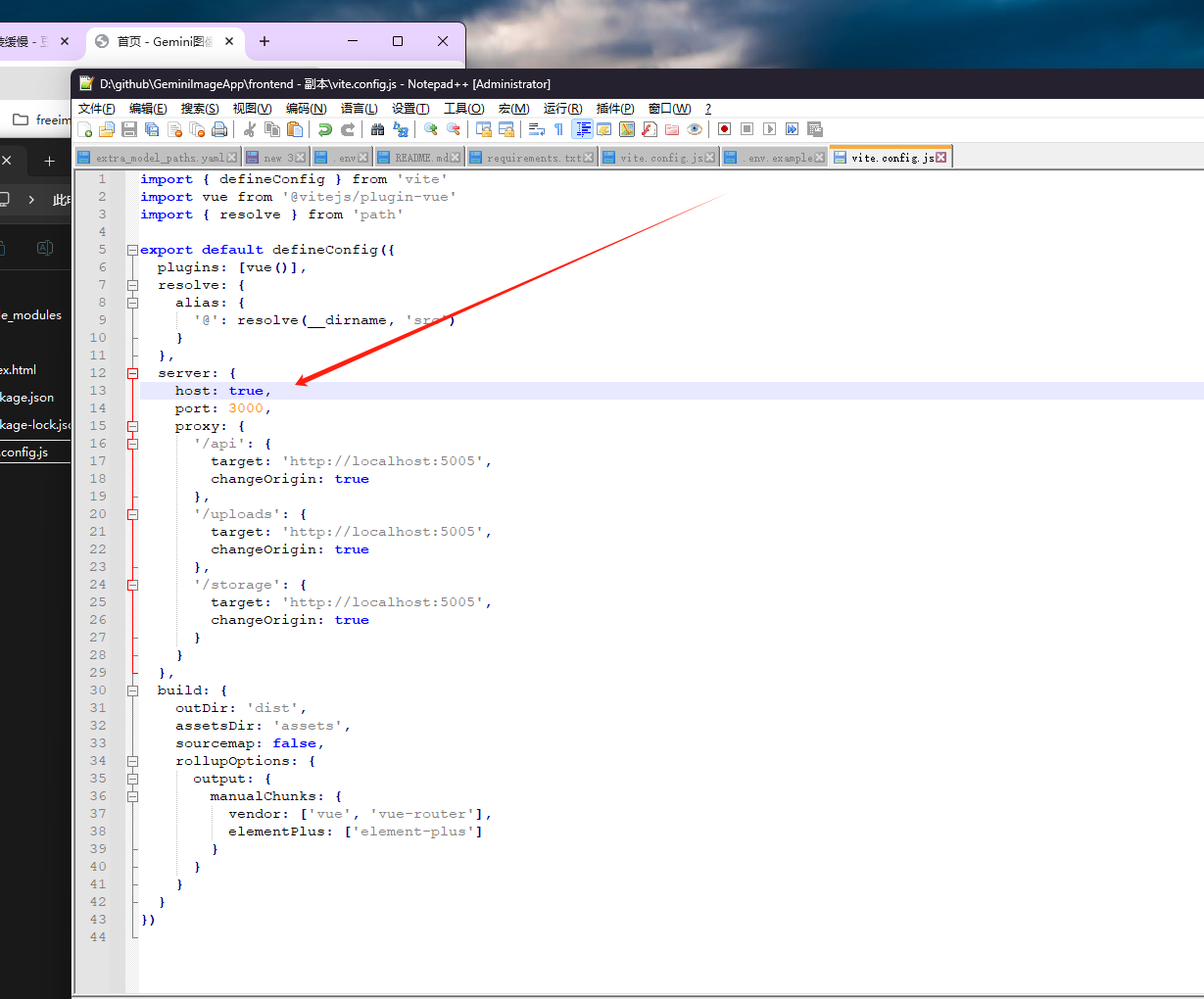
推荐 github 项目:GeminiImageApp(图片生成方向,可以做一定的素材)
推荐 github 项目:GeminiImageApp(图片生成方向,可以做一定的素材) 这个项目能干嘛? 使用 gemini 2.0 的 api 和 google 其他的 api 来做衍生处理 简化和优化了文生图和图生图的行为(我的最主要) 并且有一些目标检测和切割(我用不到) 视频和 imagefx 因为没 a…...
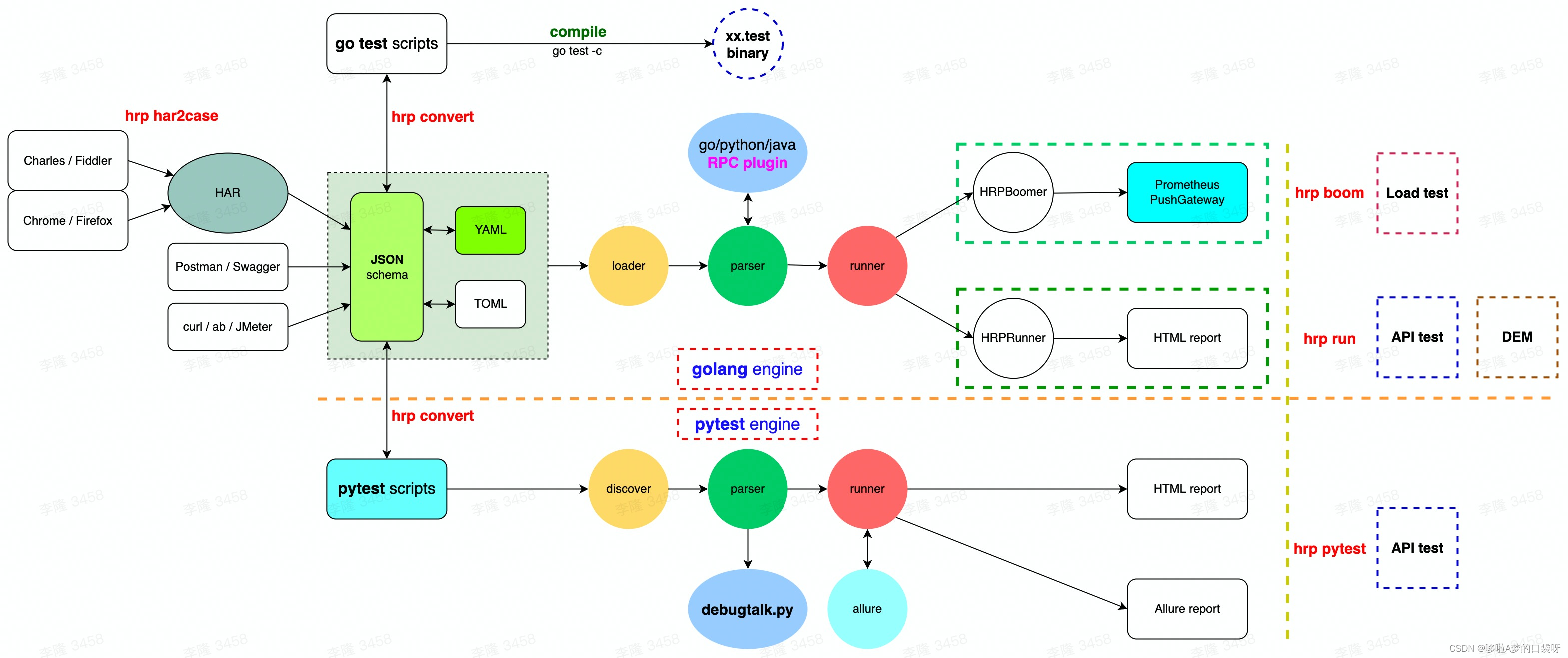
接口自动化测试:HttpRunner基础
相关文档 HttpRunner V3.x中文文档 HttpRunner 用户指南 使用HttpRunner 3.x实现接口自动化测试 HttpRunner介绍 HttpRunner 是一个开源的 API 测试工具,支持 HTTP(S)/HTTP2/WebSocket/RPC 等网络协议,涵盖接口测试、性能测试、数字体验监测等测试类型…...

Redis:现代应用开发的高效内存数据存储利器
一、Redis的起源与发展 Redis最初由意大利程序员Salvatore Sanfilippo在2009年开发,其初衷是为了满足他自己的一个项目需求,即需要一个高性能的键值存储系统来解决传统数据库在高并发场景下的性能瓶颈。随着项目的开源,Redis凭借其简单易用、…...
